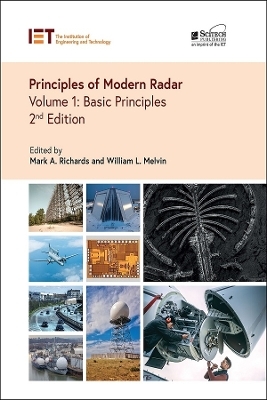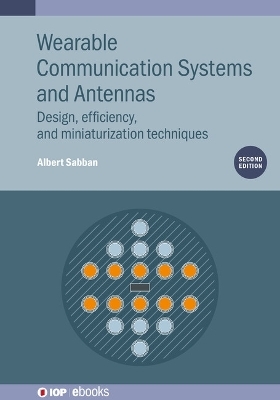
Digital & Analog Communication Systems
Pearson Education Limited (Verlag)
978-0-273-77421-1 (ISBN)
This revision of Couch’s authoritative text provides the latest treatment of digital communication systems. The author balances coverage of both digital and analog communication systems, with an emphasis on design. Students will gain a working knowledge of both classical mathematical and personal computer methods to analyze, design, and simulate modern communication systems. MATLAB is integrated throughout.
Preface
List of Symbols
Chapter 1. INTRODUCTION
1—1 Historical Perspective
1—2 Digital and Analog Sources and Systems
1—3 Deterministic and Random Waveforms
1—4 Organization of the Book
1—5 Use of a Personal Computer and MATLAB
1—6 Block Diagram of a Communication System
1—7 Frequency Allocations
1—8 Propagation of Electromagnetic Waves
1—9 Information Measure
1—10 Channel Capacity and Ideal Communication Systems
1—11 Coding
Block Codes,
Convolutional Codes,
Code Interleaving,
Code Performance,
Trellis-Coded Modulation,
1—12 Preview
1—13 Study-Aid Examples
Problems
Chapter 2. SIGNALS AND SPECTRA
2—1 Properties of Signals and Noise
Physically Realizable Waveforms
Time Average Operator
DC Value
Power
RMS Value and Normalized Power
Energy and Power Waveforms
Decibel
Phasors
2—2 Fourier Transform and Spectra
Definition
Properties of Fourier Transforms
Parseval’s Theorem and Energy Spectral Density
Dirac Delta Function and Unit Step Function
Rectangular and Triangular Pulses
Convolution
2—3 Power Spectral Density and Autocorrelation Function
Power Spectral Density
Autocorrelation Function
2—4 Orthogonal Series Representation of Signals and Noise
Orthogonal Functions
Orthogonal Series
2—5 Fourier Series
Complex Fourier Series
Quadrature Fourier Series
Polar Fourier Series
Line Spectra for Periodic Waveforms
Power Spectral Density for Periodic Waveforms
2—6 Review of Linear Systems
Linear Time-Invariant Systems
Impulse Response
Transfer Function
Distortionless Transmission
Distortion of Audio, Video, and Data Signals
2—7 Bandlimited Signals and Noise
Bandlimited Waveforms
Sampling Theorem
Impulse Sampling and Digital Signal Processing (DSP)
Dimensionality Theorem
2—8 Discrete Fourier Transform
Using the DFT to Compute the Continuous Fourier Transform
Using the DFT to Compute the Fourier Series0
2—9 Bandwidth of Signals
2—10 Summary
2—11 Study-Aid Examples
Problems
Chapter 3 BASEBAND PULSE AND DIGITAL SIGNALING 3—1 Introduction
3—2 Pulse Amplitude Modulation
Natural Sampling (Gating)
Instantaneous Sampling (Flat-Top PAM)
3—3 Pulse Code Modulation
Sampling, Quantizing, and Encoding
Practical PCM Circuits
Bandwidth of PCM Signals
Effects of Noise
Nonuniform Quantizing: _-Law and A-Law Companding
V.90 56-kb/s PCM Computer Modem
3—4 Digital Signaling
Vector Representation
Bandwidth Estimation
Binary Signaling
Multilevel Signaling
3—5 Line Codes and Spectra
Binary Line Coding
Power Spectra for Binary Line Codes
Differential Coding
Eye Patterns
Regenerative Repeaters
Bit Synchronization
Power Spectra for Multilevel Polar NRZ Signals
Spectral Efficiency
3—6 Intersymbol Interference
Nyquist’s First Method (Zero ISI)
Raised Cosine-Rolloff Nyquist Filtering
<
| Verlagsort | Harlow |
|---|---|
| Sprache | englisch |
| Maße | 178 x 232 mm |
| Gewicht | 1160 g |
| Themenwelt | Schulbuch / Wörterbuch |
| Technik ► Nachrichtentechnik | |
| ISBN-10 | 0-273-77421-2 / 0273774212 |
| ISBN-13 | 978-0-273-77421-1 / 9780273774211 |
| Zustand | Neuware |
| Informationen gemäß Produktsicherheitsverordnung (GPSR) | |
| Haben Sie eine Frage zum Produkt? |
aus dem Bereich


